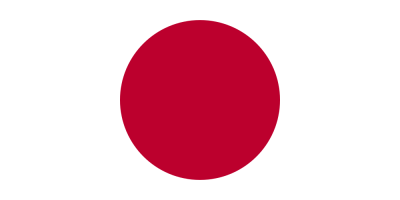China flag color codes is easily recognizable with its vibrant red background and bright yellow stars. For those looking to accurately display the colors of the Chinese flag in any digital or print project, having the precise China flag color codes is essential. This article will provide the hex, RGB, Pantone, HSL, CMYK, HWB, and NCOL values for the red and yellow hues of the iconic Chinese national flag. With the specific China flag color codes, developers, designers, and other creators can integrate the accurate flag colors into websites, apps, infographics, and more. Whether you need the red background and yellow stars of the Chinese flag for an application, website, artwork, or other purpose, this guide will supply the necessary China flag color codes.
Table of Contents
What are the colors of China flag?
The national flag of China features a large red field with five yellow stars in the upper hoist corner.
Red Background – The red background represents the communist revolution and symbolizes the blood sacrificed by revolutionary martyrs. Specifically, the red has these color codes:
- Hex code: #DE2910
- RGB values: (222, 41, 16)
- Pantone: 186 C
- CMYK values: 0, 100, 80, 0
Yellow Stars – The large yellow star represents the Communist Party of China. The smaller stars represent the four main social classes in Chinese society – the working class, the peasantry, the urban petty bourgeoisie, and the national bourgeoisie.
Specifically, the yellow stars have these color codes:
- Hex code: #FFDE00
- RGB values: (255, 222, 0)
- Pantone: 123 C
- CMYK values: 0, 13, 100, 0
The red and yellow colors were deliberately chosen to symbolize communist and revolutionary ideals. Their exact hues carry political meaning and connect to China’s history. Having the precise Pantone, CMYK, RGB, and hex values for the colors allows accurate representation of the iconic Chinese national flag.
China flag color codes & Color Names:
RED
| Color Model | Values |
|---|---|
| HTML | #FF0000 |
| HEX | FF, 00, 00 |
| RGB | rgb(255, 0, 0) |
| PANTONE | 186 C |
| HSL | hsl(0, 100%, 50%) |
| CMYK | cmyk(0%, 100%, 100%, 0%) |
| HWB | hwb(0, 0%, 0%) |
| NCOL | 90% Red, 10% Black |
YELLOW
| Color Model | Values |
|---|---|
| HTML | #FFDE00 |
| HEX | FF, DE, 00 |
| RGB | rgb(255, 222, 0) |
| PANTONE | 116 C |
| HSL | hsl(50, 100%, 50%) |
| CMYK | cmyk(0%, 13%, 100%, 0%) |
| HWB | hwb(50, 0%, 0%) |
| NCOL | 20% Yellow, 80% Red |
What is the meaning of colors in the China flag?
Red – The red represents the communist revolution and the blood sacrificed by revolutionary martyrs and heroes who died fighting for the communist cause. Red symbolizes courage, loyalty, and the ideals of communism.
Yellow – The large yellow star represents the Communist Party of China. The smaller yellow stars represent the four main social classes in Chinese society – the working class, the peasantry, the urban petty bourgeoisie, and the national bourgeoisie. Yellow signifies that these classes are united under the leadership of the Communist Party.
Some key meanings of the colors together:
- Communism – The red field evokes communism, socialism, and proletarian revolutionary struggles.
- Sacrifice – The red honors the blood sacrificed for the revolution.
- Courage – Red is associated with courage, loyalty, passion, and the fight for communist ideals.
- Unity – Yellow stars show the unity of social classes under the Communist Party.
- Brightness – Yellow depicts bright ideas, prosperity, and optimism for the future.
So in summary, red represents the communist revolution, sacrifice, and ideals, while yellow symbolizes unity, bright future, and the leading role of the Communist Party. The colors connect deeply to China’s 20th century communist history and politics.
Explore More Flag Colors:
- Niger Flag Color Codes
- Guinea Flag Color Codes
- Aruba Flag Color Codes
- Dominican Republic Flag Color Codes
FAQs: Frequently Asked Questions:
What is the old name of China?
China has had various names throughout its long history, but one of the oldest recorded names for China is “Zhongguo” (中国), which translates to “Middle Kingdom” or “Central State.” This name reflects the ancient Chinese belief that their civilization was at the center of the world.
What are 5 facts about China?
Here are five interesting facts about China:
Population: China is the most populous country in the world, with over 1.4 billion people. Its population accounts for approximately 18% of the world’s population. The country’s large population has significant implications for various aspects of its society, economy, and global influence.
Great Wall of China: The Great Wall of China is one of the most iconic landmarks in the world. It stretches over 13,000 miles (21,000 kilometers) across northern China and was originally built to protect the Chinese states and empires from invasions and raids by nomadic groups. Parts of the Great Wall date back over 2,000 years, with construction occurring during different dynasties.
Economic Growth: China has experienced rapid economic growth over the past few decades, becoming the world’s second-largest economy after the United States. The country has undergone significant industrialization and urbanization, lifting hundreds of millions of people out of poverty and transforming its economy into a global powerhouse.
Cultural Heritage: China has a rich and diverse cultural heritage that spans thousands of years. It is home to numerous UNESCO World Heritage Sites, including the Forbidden City in Beijing, the Terracotta Army in Xi’an, and the historic city of Suzhou. Chinese culture encompasses art, literature, philosophy, cuisine, traditional medicine, martial arts, and more.
Innovation and Technology: China has emerged as a leader in innovation and technology, with significant advancements in areas such as artificial intelligence, e-commerce, renewable energy, and high-speed rail. Chinese companies like Alibaba, Tencent, Huawei, and Xiaomi are at the forefront of global innovation and have expanded their reach both domestically and internationally.
What is China famous for?
China is famous for a wide range of reasons, here are some of the key highlights:
Great Wall of China: One of the most iconic landmarks in the world, the Great Wall of China is a symbol of Chinese civilization and a UNESCO World Heritage Site. Stretching over 13,000 miles, it is one of the most impressive architectural feats in history.
Chinese Cuisine: Chinese cuisine is renowned worldwide for its diversity, flavors, and regional specialties. Popular dishes include dumplings, Peking duck, Kung Pao chicken, and Sichuan hotpot. Chinese food has had a significant influence on global cuisine.
Terracotta Army: Located near the city of Xi’an, the Terracotta Army is a collection of thousands of life-sized terracotta sculptures depicting the armies of Qin Shi Huang, the first Emperor of China. It is one of the most remarkable archaeological discoveries in the world.
Inventions and Innovations: China has a long history of innovation and invention, with notable contributions including papermaking, printing, gunpowder, compasses, and porcelain. In modern times, China has become a leader in technology and innovation, particularly in areas such as artificial intelligence, e-commerce, and renewable energy.
Panda Bears: The giant panda, native to China, is one of the most beloved and iconic animals in the world. Known for its distinctive black-and-white fur, the giant panda is a symbol of conservation efforts and a major tourist attraction in China.
Who ruled China first?
The first ruling dynasty of China was the Xia Dynasty, which is traditionally believed to have lasted from approximately 2070 BCE to 1600 BCE. However, the existence of the Xia Dynasty is largely based on ancient Chinese historical texts and archaeological evidence, and some scholars debate its historical accuracy. Following the Xia Dynasty, the Shang Dynasty emerged as the first historically confirmed dynasty in China, lasting from around 1600 BCE to 1046 BCE.
Who named China?
The name “China” is believed to have originated from the Qin Dynasty, which ruled China from 221 BCE to 206 BCE. The name “Qin” is pronounced “Chin” in Mandarin, and it is thought that the name “China” may have derived from this pronunciation. The Qin Dynasty was significant for unifying China under a single centralized government and establishing the first imperial dynasty in Chinese history.
How many languages in China?
Some of the most prominent ones include:
Cantonese: Spoken primarily in the southern province of Guangdong, as well as in Hong Kong and Macau. Cantonese is one of the most widely spoken Chinese dialects outside of mainland China.
Shanghainese: The dialect spoken in Shanghai and surrounding areas in the eastern province of Jiangsu.
Hakka: Spoken by the Hakka ethnic group in various parts of southern China, as well as in Taiwan and Southeast Asia.
Min: A group of mutually unintelligible dialects spoken in Fujian province and parts of neighboring provinces.
Wu: Spoken in the region around Shanghai and in parts of neighboring provinces.
Uighur, Tibetan, Mongolian, Zhuang, and other minority languages: China is home to numerous ethnic minority groups, each with its own language and dialects. These languages are spoken primarily in specific regions where these ethnic groups are concentrated.
Why China is unique?
here are some key aspects that contribute to its uniqueness:
Long History and Civilization: China boasts one of the world’s oldest continuous civilizations, with a rich history spanning over 5,000 years. Its ancient culture has produced significant contributions to philosophy, literature, art, science, and technology.
Size and Diversity: China is the world’s most populous country and the fourth-largest in terms of land area. It is incredibly diverse, both geographically and culturally, with a wide range of landscapes, climates, languages, and ethnic groups.
Economic Growth and Development: Over the past few decades, China has experienced rapid economic growth and development, transforming from a largely agrarian society into the world’s second-largest economy. This unprecedented growth has lifted millions of people out of poverty and reshaped global trade and commerce.
Social and Political System: China’s political system is unique, being a one-party socialist state led by the Communist Party of China (CPC). The country’s governance model combines elements of socialism, state capitalism, and authoritarianism, which distinguishes it from other political systems around the world.
Technological Advancements: China is increasingly becoming a leader in innovation and technology, with significant advancements in areas such as artificial intelligence, renewable energy, high-speed rail, and e-commerce. The country’s focus on technological development is shaping global trends and competition.
Cultural Heritage: China has a rich and diverse cultural heritage, encompassing art, literature, philosophy, cuisine, traditional medicine, martial arts, and more. Its cultural traditions have had a profound influence on neighboring countries and beyond, making it a global cultural powerhouse.
Global Influence: As one of the world’s major powers, China wields significant influence on the global stage in terms of politics, economics, diplomacy, and culture. Its rise as a global superpower is reshaping international relations and dynamics.
What is China’s famous food?
Some of China’s most famous dishes include:
Peking Duck: A famous dish from Beijing (formerly known as Peking), Peking Duck is a roast duck dish that is prized for its crispy skin and tender meat. It is often served with pancakes, scallions, cucumber, and hoisin sauce.
Dim Sum: Dim Sum refers to a variety of small, bite-sized dishes served in bamboo steamers or on small plates. Popular dim sum dishes include dumplings, steamed buns, spring rolls, and rice noodle rolls, often enjoyed with tea during brunch or lunch.
Kung Pao Chicken: A spicy and savory stir-fry dish made with diced chicken, peanuts, vegetables, and chili peppers. It is known for its bold flavors and is a favorite in Sichuan cuisine.
Hot Pot: Hot Pot is a communal dining experience where diners cook a variety of ingredients such as thinly sliced meats, seafood, vegetables, and noodles in a simmering pot of broth. It is popular throughout China, with regional variations in ingredients and broth flavors.
Mapo Tofu: A classic dish from Sichuan province, Mapo Tofu is a spicy and numbing tofu dish cooked with minced pork, fermented black beans, chili oil, and Sichuan peppercorns. It is known for its bold flavors and fiery heat.
Xiaolongbao: Also known as soup dumplings, Xiaolongbao are steamed dumplings filled with pork and a flavorful broth. They are typically enjoyed by carefully biting into the dumpling to release the hot soup inside before eating.
Chow Mein: Chow Mein is a popular Chinese noodle dish made with stir-fried noodles, vegetables, and often meat or seafood. It is known for its savory flavors and satisfying texture.
Ma Po Dou Fu (Mapo Tofu): A spicy Sichuan dish featuring soft tofu cubes cooked in a spicy chili and bean-based sauce with minced meat (usually pork or beef) and fermented black beans.













